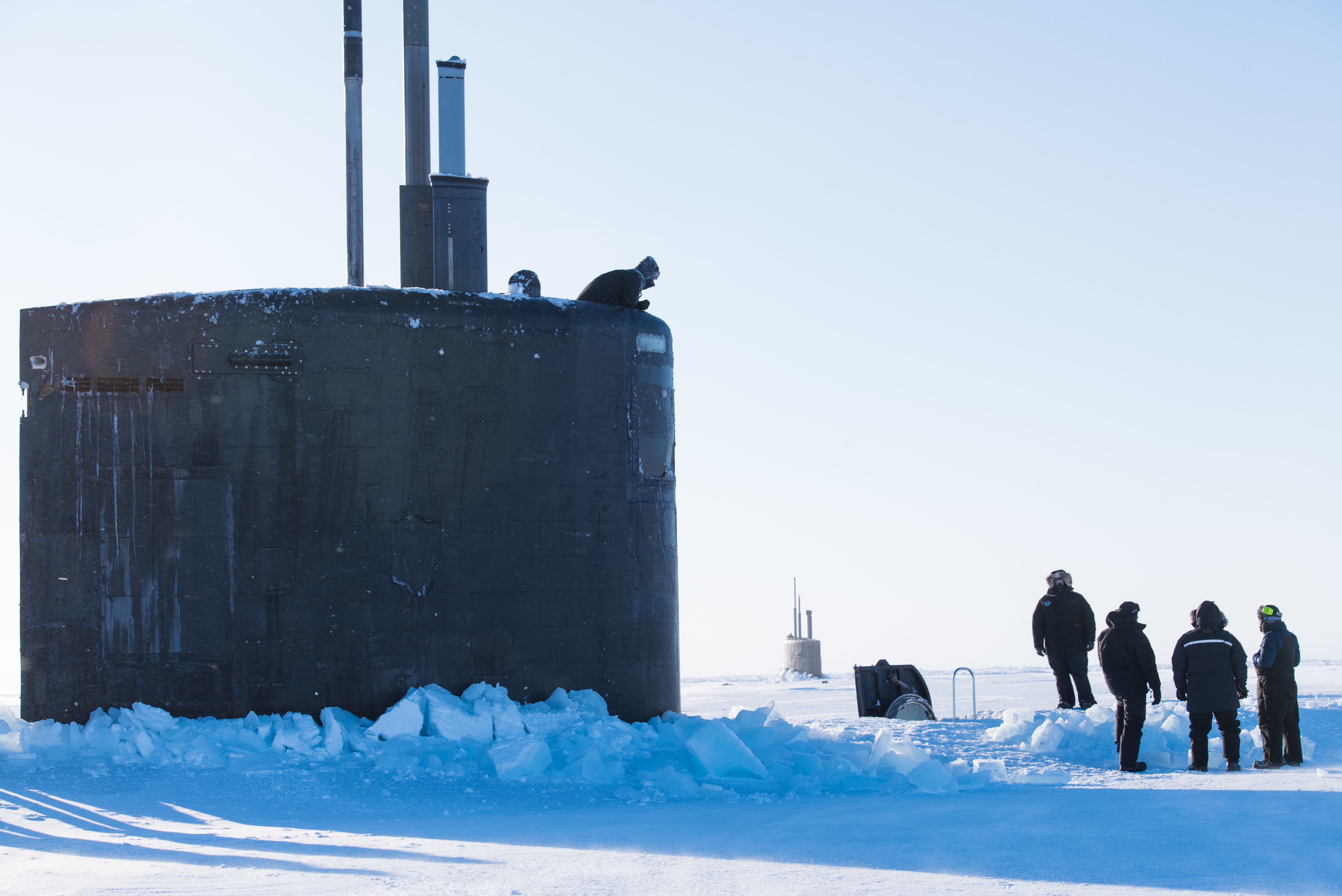Photos: Two Subs Surface Through the Ice
On March 10, the attack submarines USS Hartford and USS Connecticut both surfaced through the ice during the U.S. military's Ice Exercise (ICEX) 2018.
The two U.S. Navy submarines and the Royal Navy submarine HMS Trenchant are participating in the biennial exercise to train in extreme cold-water conditions. "From a military, geographic, and scientific perspective, the Arctic Ocean is truly unique, and remains one of the most challenging ocean environments on earth," said Rear Admiral James Pitts, commander of the Undersea Warfighting Development Center (UWDC).



ICEX provides the Navy an opportunity to test weapons systems, sonar systems, comms and navigation systems in the Arctic's unique environment. For submariners, operating in Arctic waters is much different than in more temperate climates: the subsea acoustic environment is altered by the contoured, reflective ice canopy.
According to Pitts, operating in the Arctic ice alters methods and practices by which submarines operate, communicate and navigate. "We must constantly train together with our submarine units and partners to remain proficient in this hemisphere," he said.
In recent years, the Arctic has been used as a transit route for American submarines. The most recent ICEX was conducted in 2016 with USS Hampton and USS Hartford, and the first Arctic under-ice operations by submarines were in 1947-49. On August 1, 1947, the diesel-electric submarine USS Boarfish, with Arctic Submarine Laboratory's founder Dr. Waldo Lyon onboard serving as an ice pilot, conducted the first under-ice transit of an ice floe in the Chukchi Sea.
In 1958, the nuclear-powered USS Nautilus made the first crossing of the Arctic Ocean beneath the pack ice. The first Arctic surfacing was completed by USS Skate in March 1959. USS Sargo was the first submarine to conduct a winter Bering Strait transit in 1960.
_surfaced_in_Arctic_-_1959.jpg)

that matters most
Get the latest maritime news delivered to your inbox daily.
USS Skate surfaces through the ice, 1959 (USN)
The units participating in the exercise are supported by a temporary ice camp on a moving ice floe approximately 150 miles off the coast of the northern slope of Alaska. The ice camp, administered by the Arctic Submarine Laboratory (ASL), is a temporary drifting ice station, built on multi-year sea-ice and taken down after the exercise ends.
